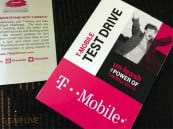Latest Gear Live Videos
Friday March 28, 2025 11:02 pm
Apple’s HUGE Siri Apple Intelligence Fumble w/ John Gruber - Geared Up 205
Tech legend John Gruber joins Andru Edwards and Jon Rettinger to unravel the story behind Apple Intelligence and its delayed features in this episode of Geared Up. From early WWDC promises to today's reality, they dissect how Apple got comfortable showcasing features it didn't hav eready, and what that says about their internal culture, marketing strategy, and the future of Siri.
Required reading for this episode: Something is Rotten in the State of Cupertino
Gruber shares rare behind-the-scenes insights, including his personal evolution in covering Apple and the moment he realized the company had broken a decades-long precedent. The trio also explores the rocky launch of Vision Pro, Apple's approach to foldables, and why Apple Maps is a cautionary tale for Apple Intelligence.
Head to the Geared Up YouTube channel to subscribe so you don't miss an episode.
- Related Tags:
Advertisement
Advertisement
Advertisement
© Gear Live Media, LLC. 2007 – User-posted content, unless source is quoted, is licensed under a Creative Commons Public Domain License. Gear Live graphics, logos, designs, page headers, button icons, videos, articles, blogs, forums, scripts and other service names are the trademarks of Gear Live Inc.












Comments: